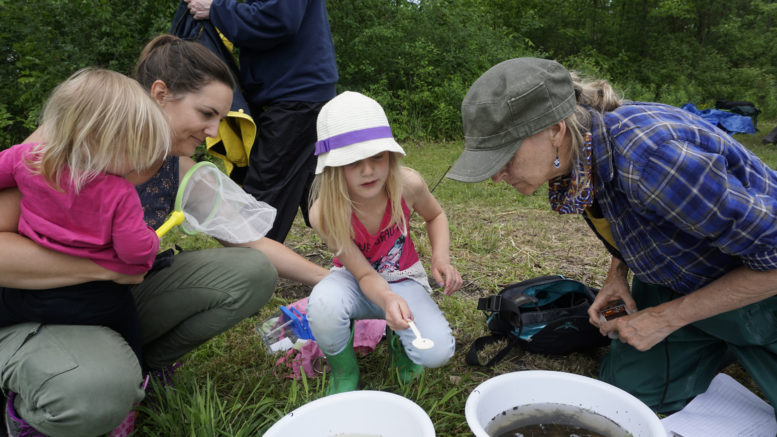Beaver Staff
Several hundred different species of animals, bugs and plant life were documented during the
Kingston Field Naturalists’ 21st BioBlitz, held June 14-15 at the Ontario Power Generation Lennox GS on Bath Road.
This property was chosen because it has wetlands, woodlands and old field habitats offering a diversity of plant and animal life.
A BioBlitz aims to document as many species of living things as possible within a specific area during a 24 hour span. This snapshot of the biodiversity provides a baseline for observing future changes caused by global warming, invasive species and loss of endangered species as well as through natural succession.
This event brought together amateurs, experts and professionals in all kinds of species, to spot and identify all they could tally in the time available. Visitors could enjoy guided walks to learn about a particular group of plants or animals and learn about the diversity of the site. All told 75 field observers, including some children, spread over the property from 3 p.m. on Friday to 3 p.m. on Saturday collecting information on everything from night time moths to early morning birds, to dragonflies to minute mosses. Participants, about half of whom were Kingston Field Naturalist members, included specialists from as far away as Ottawa as well as a number of neighbours.
Literally hundreds of plants were observed, identified and listed. Additionally, well over 250 species of flowering plants — trees, shrubs and herbs (including over 25 species of grasses and sedges), found in different habitats were recorded. Spore bearing plants (lichens and mosses) and fungi were added to the tally with the knowledge of professionals and other experts.
Vertebrate animal observations that were special included a great egret flying and a least bittern heard (a threatened species). Black terns, small songbirds with gray bodies and black heads, were documented in the area for the first time in 15 years. Over 80 species of bird were recorded. Two species of bats were recorded- big brown and eastern red-haired, which was considered encouraging as bat numbers are diminishing in general.
Four species of amphibian and four species of snake and two turtle species (both species of concern) were seen. Few fish were found though fathead minnows were prominent. Trail cams in various locations recorded species as diverse as wild turkey and coyote.
Invertebrate species (affected by the cool season and windy weather) included fewer than usual butterflies (10), moths, dragonflies and damselflies (16). Water invertebrates were dip netted or caught in minnow traps and released. Various flies, beetles and wasps were also observed.
Guided walks included a geology walk which was popular. Telescopes were set up to view the night sky, the osprey nest near the parking lot and the many great blue heron nests in the marsh.
“Our annual BioBlitz was very successful and much enjoyed by the participants on this OPG property,” said Anne Robertson, coordinator for the event. “The biodiversity is interesting with some invasive species. We hope future generations will also have the thrill of finding as much variety of life in this area in one day.”

